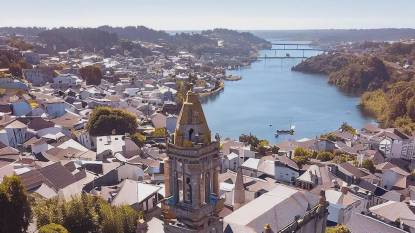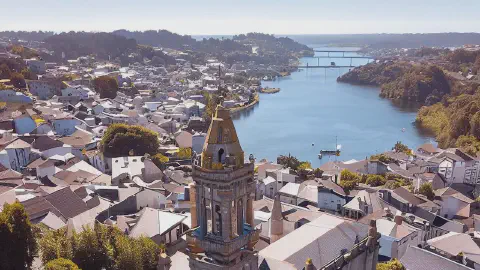
Is Betanzos Worth a Visit? A Deep Dive into Galicia's City of Knights
Posted: | Updated:
Reading time: 24 minutes
Is Betanzos Worth a Visit? A Deep Dive into Galicia's City of Knights
Posted: | Updated:
Reading time: 24 minutes
By: Simon Kemp, Editor
Betanzos, often dubbed the “City of Knights,” is a historic gem located in the province of A Coruña, Galicia, Northern Spain. With roots tracing back to pre-Roman times, this town offers a rich mix of history, from its early days as a Roman settlement to its medieval prominence as a key trade center and one of the capitals of the ancient Kingdom of Galicia. Betanzos is not just worth a visit; it’s worth staying for a few days as you take a break from your Camino Inglés Pilgrimage .
Key Takeaways
Betanzos is a town located in the province of A Coruña, in the autonomous community of Galicia, in northern Spain. It’s known for its rich medieval history and well-preserved architecture. Here are some key points about this Medieval town:
History: Betanzos was an important town during the Middle Ages and was even the capital of one of the seven provinces of the ancient Kingdom of Galicia.
Architectural Heritage: The town boasts several noteworthy buildings and structures, including churches like the Church of Santa María del Azogue and the Church of San Francisco. The town’s old quarter is particularly charming with its narrow streets and historic buildings.
Gastronomy: Betanzos is famous for its “tortilla de Betanzos”, a type of Spanish omelette that is runny inside, which is different from the more commonly found thicker version.
Festivals: The town hosts various traditional festivals throughout the year, including the “Festas de San Roque”, which is one of the most popular celebrations in the region.
Natural Beauty: The town is located near the Mandeo River, providing scenic views and opportunities for outdoor activities.
Betanzos Balloons: One of the unique traditions of Betanzos is the release of large paper balloons during the August festivities. These balloons, made by hand, are filled with hot air and released into the sky, creating a beautiful spectacle.
If you’re interested in visiting or learning more about Betanzos, it’s a great destination for those who appreciate history, architecture, and traditional Spanish culture.
Map of Betanzos
Introduction to Betanzos
Betanzos, often referred to as the “City of Knights,” is a historic town situated in the province of A Coruña, within the autonomous community of Galicia in northern Spain. Historically, it held prominence as the capital of one of the seven provinces of the ancient Kingdom of Galicia.
Founded in the early Middle Ages, Betanzos quickly rose to significance due to its strategic location and the convergence of trade routes. For example, in the 14th century, it was a pivotal hub for merchants trading in textiles and agricultural goods. The town’s medieval walls, some of which still stand today, are a testament to its historical importance and the need to defend its wealth and status.
Betanzos is a living museum of Galician culture. Its narrow cobblestone streets, traditional festivals like the “Festas de San Roque,” and the unique tradition of releasing large paper balloons during August festivities showcase the town’s rich culture.
Today, while the town retains its historic charm, it also serves as a testament to Galician culture, architecture, and gastronomy. Larger than Sobrado with it’s ancient Abbey , tourists flock to Betanzos to experience its well-preserved medieval architecture, such as the Church of Santa María del Azogue, and to savor the renowned “tortilla de Betanzos”. Additionally, its proximity to the Mandeo River offers scenic beauty and recreational activities, further enhancing its appeal to visitors.
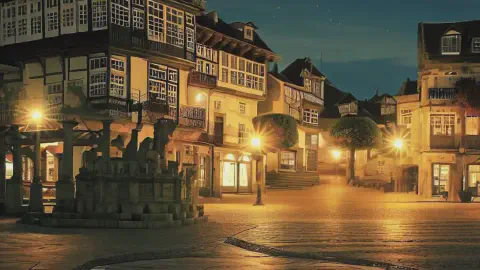
Historical Background of Betanzos
Betanzos, with its roots tracing back to pre-Roman times, was initially inhabited by the ancient Gallaeci tribe. The Romans, recognizing its strategic importance due to its proximity to the Mandeo River and fertile lands, established a settlement named “Brigantium”. Evidence of Roman influence can still be seen in the town’s archaeological sites, including remnants of roads and artifacts.
Medieval Prominence
During the Middle Ages, Betanzos flourished as a key center of trade and commerce, benefiting from its location at the crossroads of several important routes. Its significance was further elevated when it became the capital of one of the seven provinces of the ancient Kingdom of Galicia. This period saw not only the construction of iconic structures but also the establishment of important institutions, such as the town’s first council in the 12th century.
Defensive Architecture
Given its wealth and status, Betanzos was often a target for invaders, including Moorish raids and rival kingdoms. As a result, the town invested heavily in defensive structures. Beyond the medieval walls and gates, Betanzos also boasted a series of watchtowers and fortifications. The Outeiro gate, built in the 13th century, is a prime example, showcasing the architectural prowess and defensive strategies of the time.
Decline and Resurgence
By the 16th century, political shifts, including the centralization of Spanish power, and external pressures led to a decline in Betanzos’ prominence. However, the town’s resilience is evident in its subsequent resurgence as a cultural and economic hub in the 18th and 19th centuries. This revival was driven by agriculture, particularly wine production, and the textile industries, with the establishment of several mills along the Mandeo River.
Cultural and Artistic Contributions
Throughout its history, Betanzos has been a hub for art and culture. The town produced notable figures like the painter Luis Seoane and the writer Emilia Pardo Bazán. Their works, influenced by the town’s rich history and culture, have left an indelible mark on Galician art and literature.
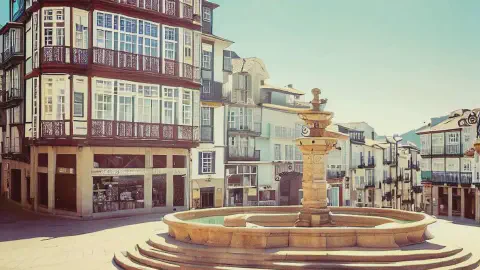
Why is Betanzos called the ‘City of Knights’?
Betanzos has volumes of history that dates back to medieval times. Among its many names, the title “City of Knights” stands out, evoking images of chivalry, grandeur, and ancient traditions. But what’s the story behind this intriguing title?
In the Middle Ages, Betanzos was a prominent hub for the nobility of Galicia. The town was home to several noble families, each vying for power, influence, and territorial control. Their presence was marked by the construction of grand mansions, fortresses, and emblematic towers that dotted the Betanzos skyline.
The Andrade Legacy
Central to Betanzos’ identity as the “City of Knights” is the Andrade family. The Andrades were one of the most powerful noble families in Galicia during the 14th and 15th centuries. Fernando Ruiz de Castro Andrade, commonly known as “Fernán Pérez de Andrade O Boo,” was a particularly influential figure. His chivalrous deeds, patronage of arts, and efforts in town development earned him and his descendants a legendary status. The family’s motto, “Ben feito, ben certo” (Well done, well certain), became synonymous with the town’s ethos.
A Testament in Stone
The architectural heritage of Betanzos bears witness to its knightly past. The towers of the Andrade family, such as the Torreón dos Andrade, stand as reminders of the town’s medieval splendor. These structures, once defensive bastions, later transformed into symbols of prestige and power.
Medieval Traditions
The legacy of the knights is not just confined to stone and mortar; it lives on in the town’s festivals and traditions. The annual Medieval Fair in Betanzos is a vibrant reenactment of its knightly past, with residents donning period costumes, jousting tournaments, and traditional crafts and trades taking center stage.
The title “City of Knights” is not just a nickname for Betanzos; it’s a reflection of its soul. The chivalrous spirit, architecture, and enduring traditions of the town serve as a bridge between its illustrious past and its present, making Betanzos a living testament to the age of knights.
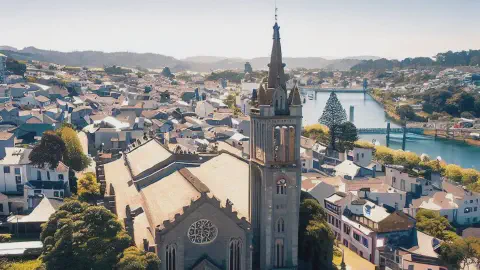
Architectural Heritage of Betanzos
Betanzos’ medieval period left an indelible mark on its skyline. The town walls, constructed primarily in the 13th century, once fortified Betanzos against invaders. Today, three of its gates still stand, with the Outeiro gate being a prime example of medieval defensive architecture. Additionally, the Pasatiempo Park, although more modern, contains stone structures and statues that pay homage to the town’s medieval history.
Religious Edifices
The town is home to several noteworthy churches that showcase the evolution of architectural styles over the centuries:
Church of Santa María del Azogue : A 14th-century Gothic masterpiece, it boasts intricate stonework, a remarkable rose window, and a unique wooden altarpiece.
Church of San Francisco: Dating back to the 14th century, this Franciscan church is renowned for its stunning cloister, Gothic ribbed vaults, and the tomb of Fernán Pérez de Andrade, a notable historical figure.
Secular Structures
Beyond religious buildings, Betanzos has a wealth of secular architecture:
Pazo de Bendaña: A Renaissance palace built in the 16th century, it exemplifies the grandeur of Galician nobility with its ornate facades and lush gardens.
Clock Tower: Erected in the 16th century, this iconic tower not only guides townsfolk with its chimes but also offers panoramic views of the town from its peak.
Old Town Hall: Located in the main square, this 18th-century building reflects the Baroque style and has been the epicenter of the town’s administrative functions.
Modern Additions
While deeply rooted in history, Betanzos has also embraced modern architectural trends. The Cultural Center of Betanzos, with its sleek design and glass facades, stands as a testament to the town’s forward-looking vision. Additionally, the Municipal Library, housed in a refurbished historic building, seamlessly blends the old with the new, offering a space for knowledge and culture.
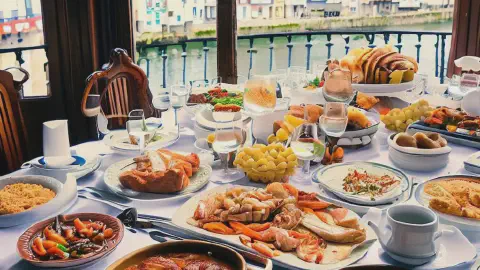
Gastronomy of Betanzos
Betanzos is renowned for its culinary traditions, a legacy that intertwines the town’s rich history with the bounty of its surrounding lands. From the fertile valleys of Galicia, which provide fresh vegetables and grains, to the nearby Atlantic coast that offers a daily catch of seafood, the town’s gastronomy is a reflection of its natural resources.
Historical Influence: The Roman and medieval eras introduced techniques and ingredients that remain staples in Betanzos’ cuisine. For instance, the Romans brought olive oil and wine-making techniques, while the medieval period saw the rise of hearty stews and pies.
Seafood Delights: Given its proximity to the coast, seafood is a cornerstone of Betanzos’ culinary scene. Dishes like pulpo a la gallega (octopus with paprika) and mussels in escabeche showcase the freshness and quality of marine produce.
Agricultural Produce: The surrounding farmlands yield a variety of crops, from the beans used in fabada (a rich bean stew) to the potatoes essential for the town’s signature tortilla de Betanzos. The region is also known for its cheeses, particularly the creamy Tetilla.
Wine Culture: The nearby wine regions of Ribeiro and Albariño have influenced Betanzos’ dining culture. Local dishes are often paired with these wines, enhancing the flavors and offering a complete Galician gastronomic experience.
Signature Dishes
Betanzos is renowned for its culinary traditions, deeply rooted in its history and local produce.
Tortilla de Betanzos: This distinct version of the Spanish omelette stands out with its runny center. Made with fresh local eggs, potatoes, and onions, it’s a testament to the town’s culinary prowess.
Empanada Gallega: A versatile Galician pie, its fillings range from tuna to lamprey, a local delicacy, especially during the lamprey season in spring.
Caldo Gallego: A hearty broth made with beans, potatoes, and collard greens, often enjoyed during the colder months.
Local Produce
Betanzos’ gastronomy is deeply influenced by the bounty of its surrounding lands and waters.
Galician Cheese: The region’s cheeses, particularly Tetilla and San Simón da Costa, are celebrated for their creamy texture and unique flavors.
Wines: While Ribeiro and Albariño wines are popular, Betanzos is also close to the Monterrei wine region, known for its aromatic white wines and robust reds.
Seafood: Being close to the coast, dishes featuring mussels, clams, and octopus are staples, often prepared in traditional Galician styles.
Culinary Events and Traditions
Betanzos’ culinary scene is vibrant, with events that both celebrate and innovate.
Fiesta de la Tortilla: This festival not only celebrates the Tortilla de Betanzos but also features cooking demonstrations and workshops.
Wine Festivals: Beyond tastings, these festivals often include traditional music, dance, and other cultural showcases.
Mercado de Abastos: Betanzos’ traditional market, where locals source fresh produce, meats, and seafood, offers a glimpse into the town’s daily culinary practices and traditions.
Sweet Treats
No gastronomic journey in Betanzos is complete without indulging in its desserts.
Tarta de Santiago: An almond cake topped with powdered sugar and the cross of Saint James, it’s a sweet nod to the region’s religious heritage.
Filloas: Thin pancakes often filled with cream or sweetened chestnut purée, they’re especially popular during the Carnival season.
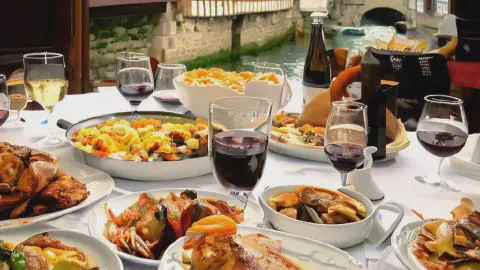
Festivals and Traditions of Betanzos
Throughout the year, the streets of Betanzos come alive with festivals that echo its rich heritage, religious devotion, and the spirited camaraderie of its residents. From religious processions that showcase profound faith to lively carnivals that reflect communal joy, Betanzos offers a blend of events that capture the essence of Galician culture.
Festas de San Roque
The Festas de San Roque, celebrated in mid-August, is not just a religious tribute to Saint Roch but also a cultural extravaganza. Apart from processions and music, the event features the “Romería,” where locals head to nearby natural spots for picnics and gatherings. The sky-filling spectacle of giant paper balloons remains a crowd favorite, symbolizing hope and celebration.
Medieval Fair
Betanzos’ Medieval Fair is more than a historical reenactment. Alongside stalls and performances, there are workshops where visitors can learn ancient crafts, from pottery to blacksmithing. The aroma of roasted chestnuts and medieval recipes fills the air, offering an immersive experience of the town’s past.
Carnival (Entroido)
During Entroido, apart from parades and music, there’s a tradition of “burying the sardine,” symbolizing the farewell to the past and welcoming the new. The carnival culminates in a grand feast, with families and friends gathering to enjoy traditional dishes.
Corpus Christi Procession
The Corpus Christi Procession is not just a religious event but also a showcase of local artistry. Young children, dressed as angels and biblical characters, often participate, adding a touch of innocence to the solemnity. The flower carpets, meticulously designed, become temporary works of art, admired by both locals and visitors.
Night of the Bonfires (Noite da Queima)
Beyond lighting bonfires during the Noite da Queima, there’s also a tradition of creating “meigas” or witch effigies, which are then burned. This act symbolizes the dispelling of bad spirits and misfortunes. Additionally, locals often gather to sing, dance, and share stories around the fires, strengthening community bonds.
Pilgrimage to Os Caneiros
Held in late August, the Pilgrimage to Os Caneiros is a boat procession along the Mandeo River. Participants, dressed in traditional attire, navigate the river to reach a chapel dedicated to Saint Lazarus. The event is a blend of religious devotion and communal celebration, with music, dance, and shared meals.
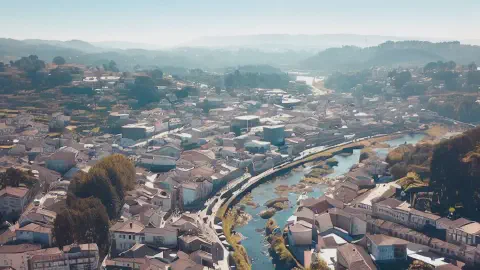
Natural Beauty and Surroundings of Betanzos
From the serene flow of the Mandeo River to the verdant expanses of its parks and the rugged beauty of nearby coastal attractions, the town offers a harmonious blend of nature and culture. This section delves into the scenic wonders, green spaces, and the rich biodiversity that make Betanzos a haven for nature enthusiasts and history buffs alike.
Mandeo River
The Mandeo River, a lifeblood of Betanzos, not only offers scenic beauty but also plays a pivotal role in the town’s history and daily life. Its waters have been a source of sustenance, transportation, and recreation for centuries. Alongside the annual Pilgrimage to Os Caneiros, locals often engage in fishing, kayaking, and riverside festivals, celebrating the bond between the town and its river.
Parks and Green Spaces
Pasatiempo Park: More than just a garden, this park is a testament to the vision of its creators, the García brothers. It offers a blend of botanical wonders, artistic sculptures, and even representations of global landmarks, making it a microcosm of the world within Betanzos.
Os Gándaros Park: Beyond its tranquility, this park is a hub for community events, from open-air concerts to educational workshops on local flora and fauna.
Nearby Natural Attractions
Fragas do Eume: This natural park is not just a space of untouched beauty but also a historical treasure trove, housing the ancient Monastery of Caaveiro. Hiking trails here offer both natural wonders and glimpses of hermitage sites.
Beaches of A Coruña: The proximity to the Atlantic Ocean means that Betanzos enjoys a maritime influence. Local legends and traditions often revolve around the sea, and the beaches serve as gathering spots for festivals like the Noite de San Xoán, where bonfires light up the night.
Flora and Fauna
The biodiversity of Betanzos extends beyond its immediate surroundings. The Montes de Betanzos, a range of hills, provides habitats for deer, wild boars, and various raptors. Seasonal migrations also bring a variety of birds to the region, making it a hotspot for birdwatching. The town’s commitment to preserving its natural heritage is evident in its conservation efforts and eco-friendly initiatives.
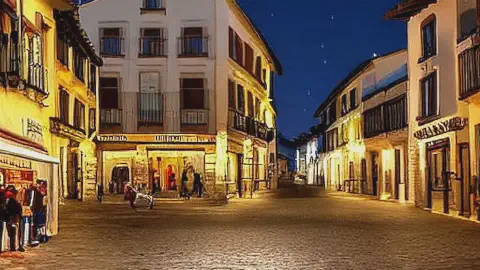
Modern Day Betanzos
Betanzos, while deeply rooted in history, has blossomed into a contemporary town that embraces the challenges and opportunities of the 21st century. Its blend of tradition and modernity creates a unique ambiance, where ancient streets meet innovative initiatives.
Economic Landscape
Betanzos’ strategic location and rich heritage have paved the way for a diverse economy.
Technology and Innovation: The proximity to tech hubs in A Coruña has led to the emergence of startups and tech enterprises in Betanzos, fostering innovation.
Craftsmanship: Local artisans continue age-old traditions, producing items like pottery, textiles, and woodwork, which find markets both locally and internationally.
Education and Culture
Betanzos’ commitment to education extends beyond traditional learning.
Language Schools: Recognizing the importance of global communication, several language schools offer courses in English, French, and other languages.
Music and Dance: Institutions like the Betanzos Music Conservatory nurture talent, ensuring that the town’s musical heritage thrives alongside contemporary genres.
Urban Development
Modern infrastructure complements the town’s historical charm.
Pedestrian Zones: Parts of Betanzos have been transformed into pedestrian-friendly zones, enhancing the shopping and dining experience while reducing vehicular pollution.
Parks and Recreation: New recreational areas and sports facilities cater to the town’s active residents, promoting health and community bonding.
Contemporary Lifestyle
The pulse of modern life beats strongly in Betanzos.
Art Festivals: Contemporary art festivals and exhibitions attract artists from across Spain and beyond, making Betanzos a hub for modern artistic expression.
Farmers’ Markets: Embracing the farm-to-table movement, regular farmers’ markets offer fresh, locally-sourced produce, bridging the gap between rural producers and urban consumers.
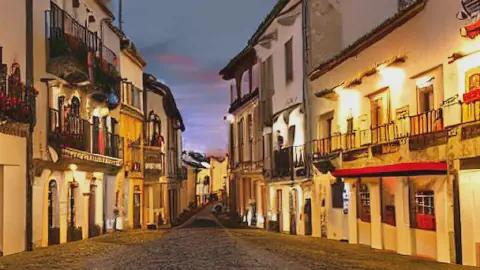
Tips for Visitors
Embarking on a journey to Betanzos promises a blend of historical allure and contemporary charm. To ensure a seamless and enriching experience, here are some tailored tips for travelers venturing into this captivating Galician town.
Best Time to Visit
Weather Insights: While spring and fall are pleasant, summers in Betanzos are relatively cooler compared to other Spanish towns, making it a refreshing summer getaway.
Local Events: Apart from major festivals, consider checking the town’s event calendar for smaller cultural events, workshops, and exhibitions that might pique your interest.
Local Etiquette
Dress Code: When visiting religious sites, it’s respectful to wear modest clothing, covering shoulders and knees.
Tipping: In local taverns and cafes, rounding up the bill or leaving small change is appreciated, though not mandatory.
Getting Around
Car Rentals: If you plan to explore the surrounding regions, consider renting a car. However, remember that parking within the town can be limited.
Bicycle Rentals: Betanzos is bike-friendly, and renting a bicycle can be a delightful way to explore the town and its outskirts.
Local Delicacies
Market Visits: The Mercado de Abastos is a vibrant spot to sample local produce, cheeses, and even freshly prepared snacks.
Galician Coffee: Don’t miss out on trying the ‘café de pota’, a traditional Galician coffee, often enjoyed with a splash of local spirits.
Accommodation
Homestays: For a more immersive experience, consider booking a homestay or a local guesthouse. Interacting with residents can offer unique insights into Betanzos’ daily life.
Camping: The surrounding areas of Betanzos have some scenic camping spots for those looking for an adventurous accommodation option.
Safety and Health
Emergency Numbers: Familiarize yourself with local emergency numbers. For general emergencies in Spain, dial 112.
Pharmacies: While Betanzos is safe and welcoming, it’s always good to know the location of the nearest pharmacy. Look for the green cross sign, which is the universal symbol for pharmacies in Spain.
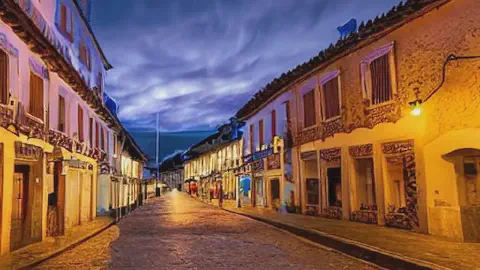
Information for Camino Inglés Pilgrims in Betanzos
Betanzos is a pivotal stop for pilgrims traversing the Camino Inglés towards Santiago de Compostela. As this route gains popularity, this medieval-rooted municipality has risen to the occasion, offering facilities and accommodations tailored for the weary traveler. This guide delves deeper into the pilgrim facilities and albergues in Betanzos, ensuring a restful stopover.
Pilgrim Facilities
Pilgrim’s Reception Office: Before you delve into the town’s offerings, visit this office located near the Albergue de Peregrinos. It’s a short walk from most parts of the town, and buses heading towards the town center will drop you nearby. Here, you can get your pilgrim passport stamped and gather valuable information.
Foot Care Services: After the long walk, your feet might need some attention. Betanzos boasts several foot care clinics, especially near the town center. Most are within walking distance from the main albergues, and local taxis are familiar with them, ensuring a quick ride if needed.
Laundry Facilities: While most albergues offer in-house laundry services, there are also a few laundromats in the town center, easily accessible by a short walk or a quick taxi ride.
Dining and Nutrition
Pilgrim Menus: Numerous restaurants, especially those around Plaza Hermanos García Naveira, offer specialized ‘Pilgrim Menus’. If you’re arriving by bus or train, these eateries are a short taxi ride away or can be reached by the local buses heading to the town center.
Local Markets: The Mercado de Abastos, located in the heart of the town, is a bustling spot where pilgrims can replenish their supplies. It’s within walking distance from most accommodations in Betanzos, and taxis can easily drop you at its entrance.
Spiritual and Reflective Spaces
Iglesia de San Francisco: This historic church, a stone’s throw away from the Albergue de Peregrinos, offers daily masses and a tranquil space for reflection. It’s easily accessible by foot from most parts of Betanzos.
Meditation and Yoga: For those seeking a holistic experience, some centers near the town center offer sessions to rejuvenate the mind and body. They’re usually a short walk or taxi ride away from the main pilgrim accommodations.
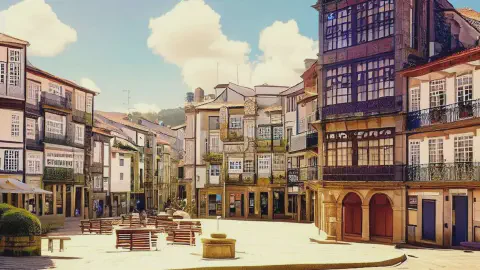
Albergues in Betanzos
Albergues in Betanzos play a crucial role in accommodating the influx of pilgrims and travelers who pass through this historic town, especially those on the Camino Inglés route to Santiago de Compostela.
1. Albergue de Peregrinos Casa da Pescadería de Betanzos
Situated near the town center, just a 10-minute walk from the central Plaza Hermanos García Naveira, this municipal albergue offers basic yet essential facilities. For those arriving by public transportation, the bus stop is a mere 5-minute walk away. Taxis are readily available from the train station, making it a short and affordable ride.
Location: Situated near the town center, a short walk from the central Plaza Hermanos García Naveira.
Approximate Cost: €10-€15 per night.
How to Get There: If arriving by bus or train, the albergue is a short taxi ride away. It’s also easily accessible on foot from most parts of the town.
Capacity: Around 30-40 beds.
Popularity: As a municipal albergue, it’s quite popular and can get busy during peak pilgrimage seasons.
Google Maps: https://goo.gl/maps/Hsy7yToGmfjz32ZV7
2. Hostel Betanzos
A blend of the old and new, this hostel is located closer to the outskirts but is still accessible by a 15-minute walk from the main town square. Buses frequently ply this route, and taxis can easily reach the hostel from any part of Betanzos.
Location: Located closer to the outskirts but still within walking distance from the main town square.
Approximate Cost: €15-€25 per night, depending on room type.
How to Get There: Buses frequently ply this route, and taxis can easily reach the hostel from any part of Betanzos.
Capacity: Approximately 50 beds, with both shared dormitories and private rooms.
Popularity: Known for its blend of traditional albergue and modern hostel vibes, it’s a favorite among younger pilgrims and those seeking more amenities.
3. Albergue Mesón do Bento
Situated in the vibrant heart of Betanzos, Albergue Mesón do Bento is more than just a place to rest. Its proximity to major attractions, combined with its cozy ambiance, makes it a favorite among many. The albergue exudes a warm, homely feel, with its wooden interiors and traditional Galician decor. After a long day of walking, pilgrims can unwind and relish the local flavors at the nearby eateries, making their stay in Betanzos truly immersive.
Location: Located in the heart of Betanzos, close to major attractions.
Approximate Cost: €20-€30 per night.
How to Get There: Easily accessible on foot from the town’s main entrance points. Taxis and buses also stop nearby.
Capacity: Around 20 beds.
Popularity: Popular for its cozy atmosphere and proximity to dining and shopping areas.
4. Albergue Camiño do Vento
For those seeking solace amidst nature, Albergue Camiño do Vento offers the perfect escape. Located on the outskirts of Betanzos, it provides a serene setting, surrounded by lush greenery and the gentle sounds of nature. The albergue’s rustic charm, combined with its tranquil environment, makes it a haven for pilgrims looking to rejuvenate their spirits. Its slightly remote location adds to its allure, offering a unique experience away from the typical pilgrim trail.
Location: Slightly outside the main town, offering a more tranquil setting.
Approximate Cost: €15-€20 per night.
How to Get There: Best reached by taxi or a longer walk from the town center. Some local buses might have routes passing nearby.
Capacity: Approximately 25 beds.
Popularity: Favored by those looking for a quieter experience away from the hustle and bustle.
5. Albergue Río Mandeo
Perched by the picturesque banks of the Mandeo River, Albergue Río Mandeo promises a stay that’s both restful and scenic. The gentle flow of the river, combined with the albergue’s comfortable facilities, ensures that pilgrims find both physical and mental rejuvenation. Its location, while offering serene river views, is still conveniently close to the town center, giving travelers the best of both worlds. The albergue’s warm hospitality and idyllic setting make it a must-visit spot on the Camino Inglés.
Location: Nestled by the banks of the Mandeo River, it offers a serene environment just a short distance from the town center.
Approximate Cost: €18-€25 per night.
How to Get There: It’s a brief walk from the town center, making it easily accessible for pilgrims. For those with heavy luggage or arriving late, taxis are readily available.
Capacity: Around 30 beds.
Popularity: Known for its picturesque setting and warm hospitality, Albergue Río Mandeo is a favorite among those looking to relax and rejuvenate by the river.
Google Maps: https://goo.gl/maps/ozELyfbUHZbmEDZWA
As always, for the most accurate and up-to-date details, it’s recommended to consult specific albergue websites or local tourist information centers.
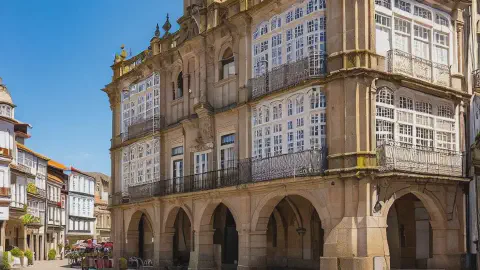
Frequently Asked Questions (FAQ’s) for Betanzos
1. What is Betanzos best known for?
Betanzos is renowned for its rich history, architecture like the Church of Santa María del Azogue and Church of San Francisco, and its unique version of the Spanish tortilla, which is runnier than the typical version.
2. How do I get to Betanzos?
Betanzos is well-connected by road and rail. The town has two train stations: Betanzos-Cidade and Betanzos-Infesta. Buses also frequently ply between Betanzos and other major Galician cities.
3. Are there any special events or festivals in Betanzos?
Yes, Betanzos hosts several festivals, with the Festas de San Roque in August being the most prominent. The town also celebrates a vibrant Medieval Fair and the unique Night of the Bonfires (Noite da Queima).
4. Where can I stay in Betanzos?
Betanzos offers a range of accommodations, from traditional albergues for pilgrims to boutique hotels and guesthouses. The Albergue de Peregrinos de Betanzos is a popular choice for Camino Inglés walkers.
5. What local dishes should I try in Betanzos?
Definitely sample the local version of the Spanish tortilla. Also, the region’s seafood, especially octopus (pulpo a la gallega), is a must-try. Pair your meal with a glass of Albariño, a white wine native to Galicia.
6. Is Betanzos a part of any pilgrimage route?
Yes, Betanzos is a significant stop on the Camino Inglés, one of the pilgrimage routes leading to Santiago de Compostela.
7. Are there any natural attractions near Betanzos?
Absolutely! The Mandeo River offers picturesque views and recreational activities. Additionally, the Fragas do Eume natural park, one of Europe’s best-preserved Atlantic coastal forests, is a short drive away.
8. What language is spoken in Betanzos?
While Spanish is widely spoken, many locals also communicate in Galician, the regional language of Galicia.
9. Are there any museums or cultural centers in Betanzos?
Yes, the Betanzos Museum of Sacred Art and the Pasatiempo Park, which blends nature with artistry, are notable cultural spots in the town.
10. Is Betanzos tourist-friendly?
Absolutely! Betanzos is known for its warm hospitality and offers a range of facilities, from tourist information centers to guided tours, ensuring visitors have a memorable experience.

